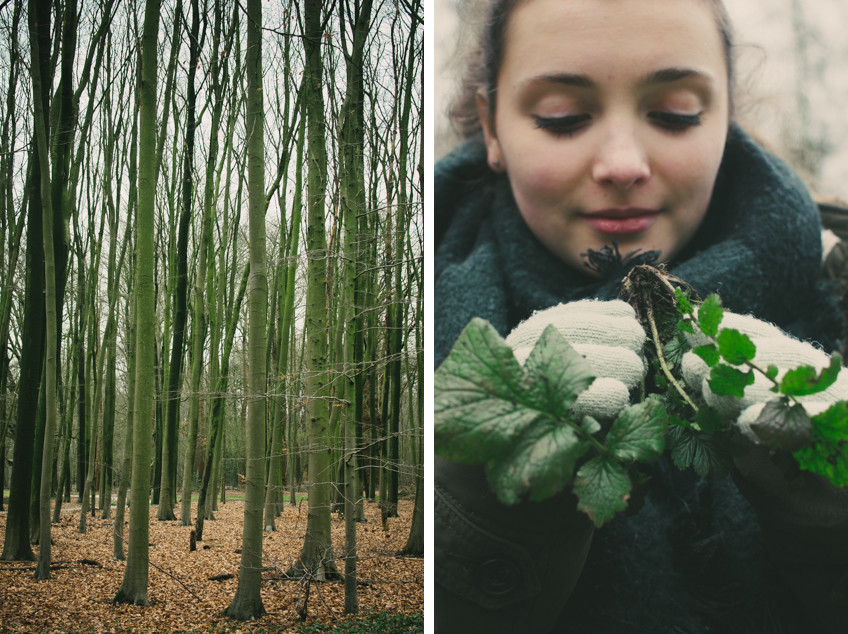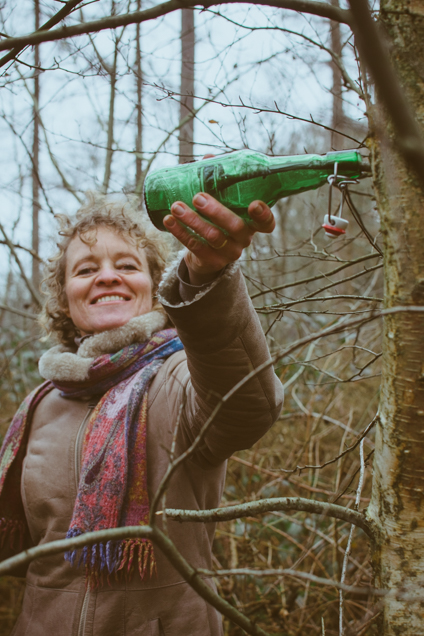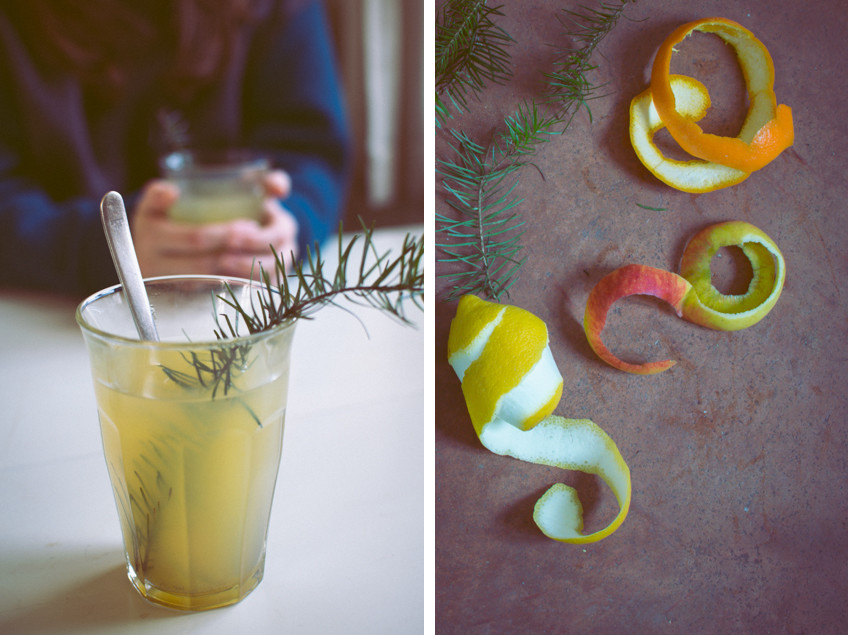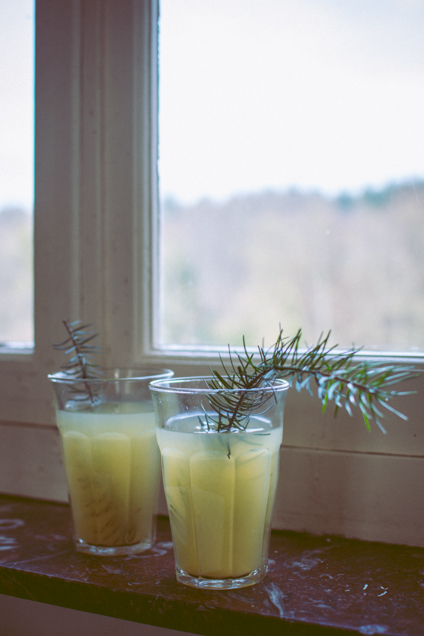One moment you meet Elsje at your publisher’s party and the next you follow her into the woods, searching for all things edible that nature has to offer in the winter. I can assure you, it’s more than you think. Elsje Bruinesteijn is the co-author of the price-winning book Liever Lokaal (Preferably Local) and organizes foraging excursions every month at the beautiful forested Estate of Groeneveld in the center of the Netherlands. Here she also has a vegetable garden that makes you jealous.
On a cold and windy Sunday afternoon we followed Elsje into the woods. Almost immediately Elsje picked a tiny wild white carrot, which tastes good in soup. Shortly after she showed us Garlic Mustard, which has an intense garlic flavor and smell (she makes pesto with it), Hairy Bitter-Cress (smells like watercress), and Ground-Ivy (smells like Hop). We tried Beech buds and learned that the young soft leaves of the Beech tree can be eaten as salad leaves. Fiddleheads, the furled fronds of a young fern, can be eaten as well, something I already knew from my years in the US, where fiddleheads are sold at stores like Whole Foods.
You can eat so many wonderful wild plants and thanks to the mellow winters you can forage all kinds of plants in early spring, such as Lesser Celandine, Sweet Woodruff, Clove Root and Blackberry buds. Try to avoid picking plants under knee height because of the risk of becoming infected by the fox tapeworm, which is also harmful to humans. Cook any plants you pick under knee high briefly before using.

Off the beaten track, Elsje collects Birch sap in February, March, and April by hanging a bottle on a broken off branch of a Birch tree. The process is similar to tapping Maple sap. Birch sap tastes like very pure water and you can cook it into syrup if you would like (but you’ll need several liters of Birch sap for this).
The Dutch forests are full of Douglas firs. The needles have a lemony taste and contain a lot of Vitamin C. At the end of the foraging tour, Elsje gave us a warm mug of Douglas fir needle tea, which was tasty and comforting. Now that flu season is in full swing, we can use some extra Vitamin C, so I prepared the tea at home as well.
You’ll find more info about the foraging and gardening tours on Elsje’s blog.
Douglas Fir Tea
Elsje: “Do not turn on the hood if you like the smell of sauna!”
Makes about 4 cups
Action Time: about 45 minutes
peel and juice of 1 organic lemon
peel and juice of 1 organic orange
peel of 1 apple
1-2 large handfuls of douglas fir needles
honey to taste
In a large pan bring 8 cups of water to a boil, together with the lemon and orange juice, all the fruit peels, and the douglas fir needles. Turn down the heat and let it simmer for 30-40 minutes until the tea is reduced by half and has a full flavor. Add some more water if you think the taste is too overpowering; add some extra douglas fir needles if you want a stronger flavor. Strain the tea and stir in some honey.




